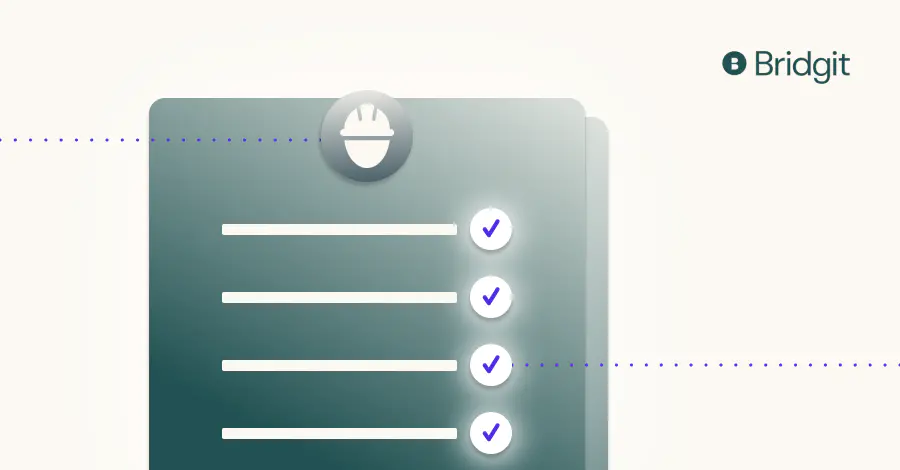In the construction industry, building and maintaining good working relationships is an integral part of the job. It’s not uncommon for general contractors to work with the same subcontractors for years. After all, if a subcontractor is reliable and consistently produces quality work, why change things up? But when subcontractors retire or when construction firms expand, new labor must be hired, which is why project managers will need to know how to hire a subcontractor.
Table of Contents
Hiring the right subcontractor ensures your project will stay on track for completion.
The benefits of hiring a subcontractor
Construction projects, especially larger ones, rely on the labor and specialized skills provided by subcontractors. If you’re overseeing a construction project, you’ll likely need to hire a subcontractor at one point or another.
Subcontractors are experts in their field, knowing how and where to procure materials to get the job done quickly and up to standard. Plus, hiring subcontractors can save your construction firm money compared to having untrained crew members do the job.
Small firms hire subcontractors for mechanical, electrical, and plumbing (MEP) work, as well as for things like glazing and structural steel. Bigger firms usually have in-house concrete and drywall workers, hiring subcontractors for all other work.
How to find subcontractors as a general contractor
Project managers and general contractors typically search for subcontractors through trade organizations and construction network sites.
A general contractor starts by putting out a Request for Proposal (RFP) detailing important things like project objectives, skills required for the job, and an expected timeline. Once proposals have been submitted, the general contractor can then narrow applicants down to a list of the best and select the most suitable candidate to hire.
Some general contractors also host local “Meet the GC” events, which help with networking and making important connections that could lead to future work.
How to hire a subcontractor
When hiring subcontractors, general contractors usually go through a prequalification process to ensure that the subs they’ll be working with meet expectations and will provide quality work. For larger projects, subcontractors are often prequalified on a per-project basis. Here are some factors to consider when thinking about how to hire a subcontractor.
Subcontractor size
The size of the subcontractor business (i.e., whether they’re a one-man operation or if they themselves have workers under them) should play a major role in your hiring decision. The subcontractor’s size should be compatible with the scale of your project—overburdening a worker or team can cause delays and end up slowing down project progress.
General contractors should also confirm when hiring a subcontractor whether they’ll have enough equipment and resources to get the job done.
Amount of experience
The good news is that subcontractors typically go through a lot of training before they can legally work on the field. Apprenticeship programs usually last three to four years, and by the time they’ve graduated, they’re well-versed in the trade.
Still, if your project is working on a large scale, you’ll want subcontractors with several years of experience working on the job to reduce risk, given the interconnected nature of construction projects.
During the prequalification process, it helps to ask for a portfolio of previous work.
Safety training and records
Another factor to take into account in hiring a subcontractor is whether they’ve completed their safety training. It’s important to ask subcontractors to submit all safety records, including OSHA records and an EMR verification. Ask them questions such as how many accidents and injuries they’ve experienced on the job in the past, whether they could have been avoided, and how much time was lost as a result.
To aim here is to reduce risk and liability as much as possible.
Think your workforce planning meetings could be more productive?
Download our ebook to learn how to run efficient, effective workforce planning meetings with your team.
Forms to fill out when hiring a subcontractor
Hiring subcontractors requires that paperwork be done differently compared to when hiring full-time employees. Here are some forms you’ll need to have subcontractors fill out.
1099 forms
1099 subcontractor forms are tax agreements filled out by workers that need to be written and signed every time you hire a subcontractor.
Important details to include are payment terms and cancellation policies, as well as start and finish project dates and due dates for payments. Adding in a daily reporting requirement will ensure there’s a clear line of communication between you and the subcontractor throughout the project’s life cycle.
Form W-9
Subcontractors must fill out this form to confirm that they’ll be responsible for paying any taxes on their end as independent entities. This shows due diligence and will ensure that everyone is prepared when tax season comes around.
Bridgit, your solution to workforce management
Learning how to hire a subcontractor is one thing—managing them once you’ve recruited them is another.
Bridgit Bench is a workforce management solution that lets you modernize your processes and add to your existing tech stack. Our cloud-based organizational dashboard allows you to track project progress and manage construction personnel.
Take advantage of our platform’s people intelligence, which lets you plan your workforce strategically, grow and retain your top talent, and realize the full potential of your employees. You can also access valuable insights like unfilled project roles (with the ability to filter results to prioritize allocations), reporting (with a view of workforce utilization rates by title, region), and project breakdown (to know your workforce allocation on current and upcoming projects).
Use Bridgit Bench to put the right people on the job. View profiles detailing each person’s skills, certifications, experience, project history, and professional goals. Workers are listed out in a way that lets you easily sort, search, and filter your entire team so you can find exactly who you’re looking for.
Plus, Bridgit Bench integrates with various project management, HRIS, and CRM platforms including: Salesforce, Procore, bambooHR, Autodesk, and HubSpot.
Choose Bridgit today!



